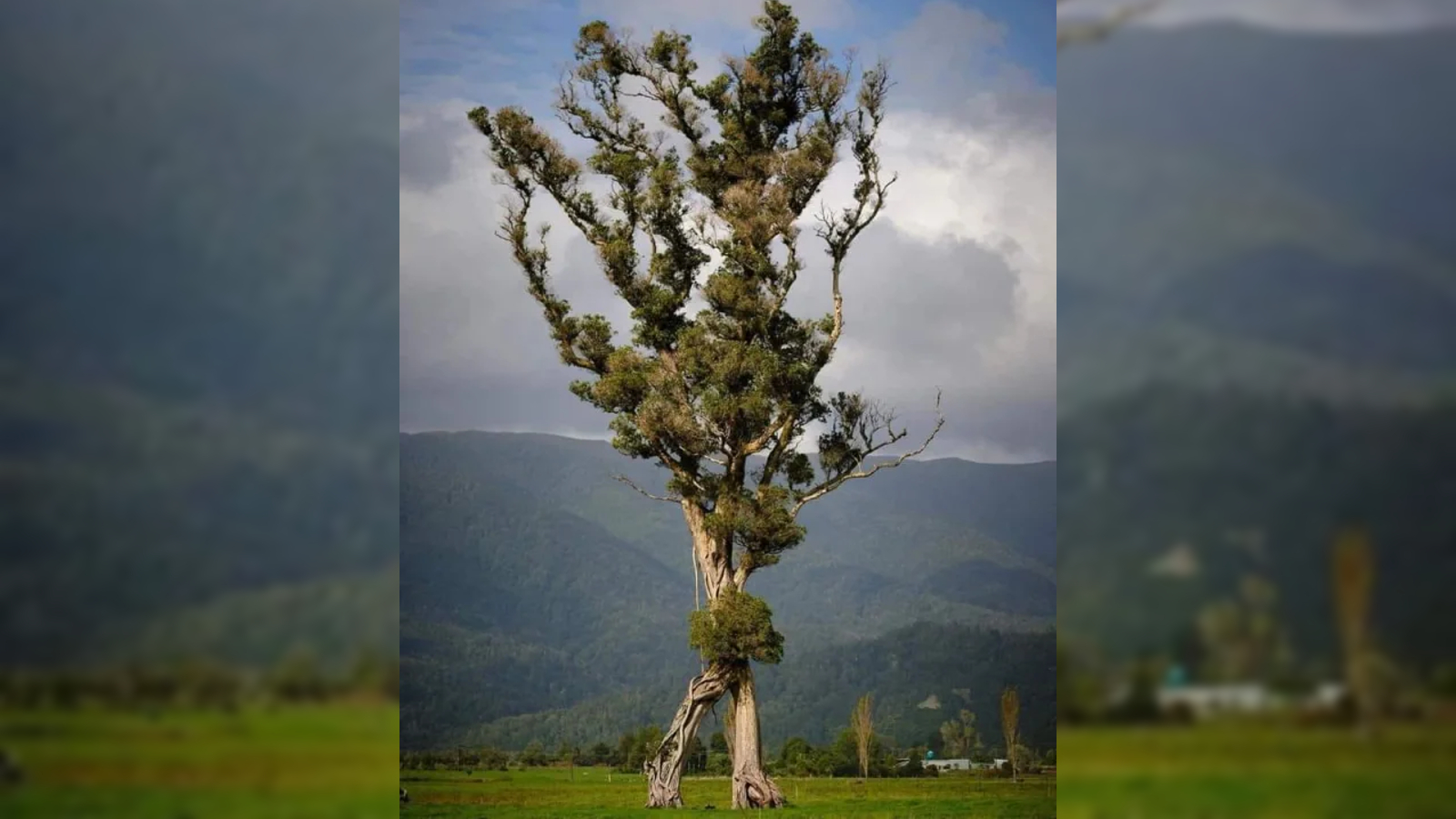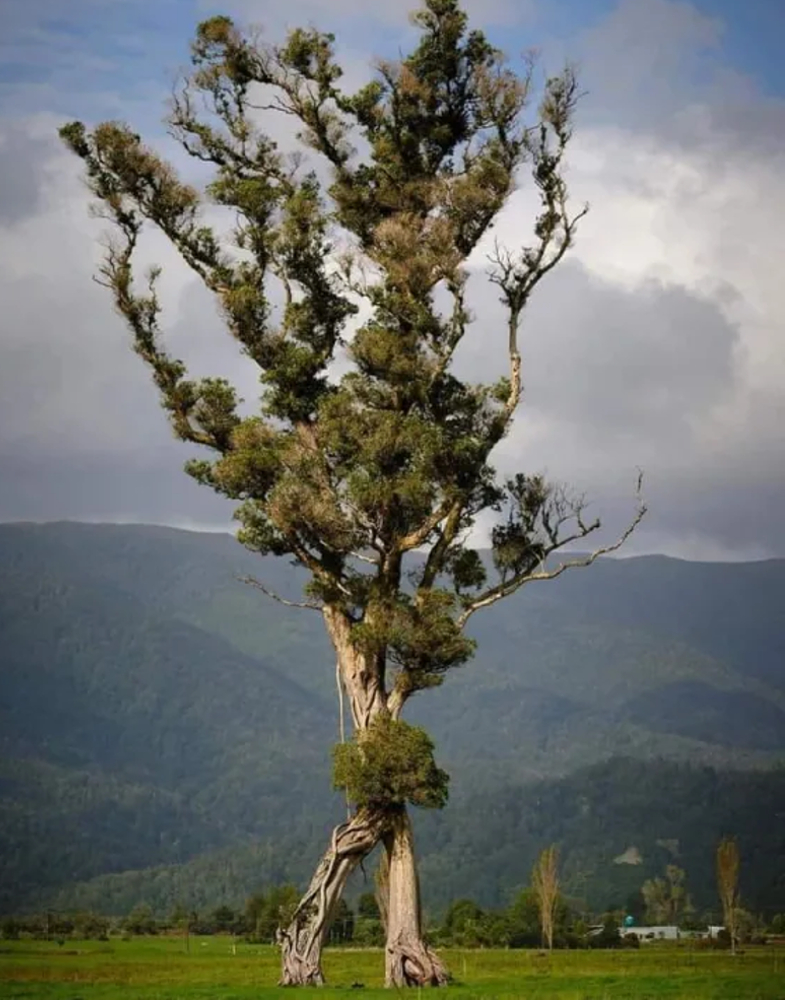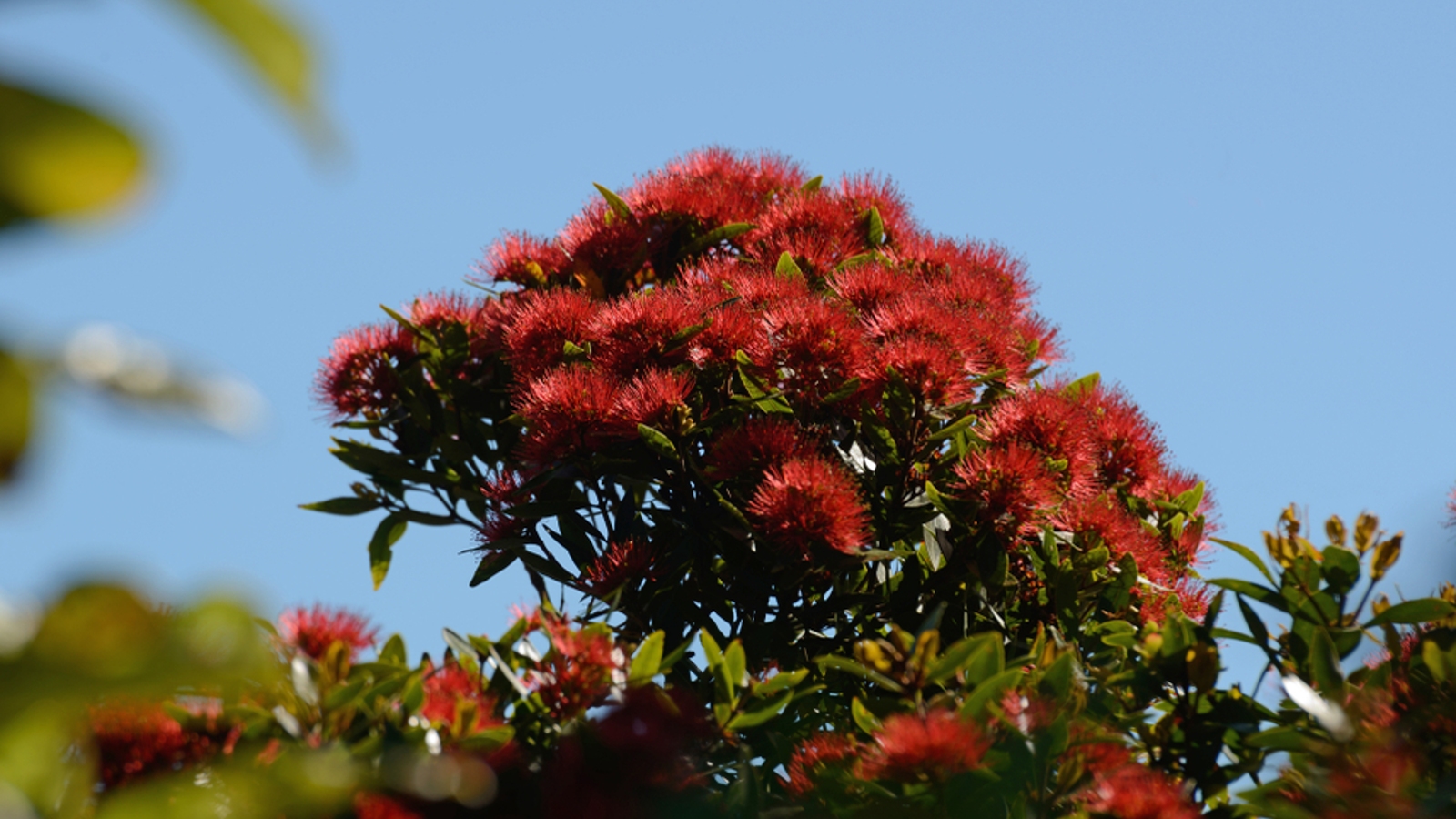
A bizarre, giant tree with a pair of leg-like trunks looks like an Ent from "The Lord of the Rings" — and it has just been crowned New Zealand's Tree of the Year after strolling past the rest of the competition.
The strange tree, which has been nicknamed the "walking tree" because it looks like it's striding across a field, is a northern rātā (Metrosideros robusta) — one of New Zealand's tallest flowering tree species that can live for up to 1,000 years. It's roots and long, arm-like branches make the tree look like an Ent — a fictional race of tree-like creatures that guard the forests of Middle-earth.
The tree stands alone in the middle of a large paddock next to a cemetery near Karamea on the west coast of South Island. It is around 105 feet (32 meters) tall — around the same height as a seven-story building, according to The New Zealand Tree Register.
The walking tree was the clear winner of the 2024 edition of the New Zealand Arboricultural Association's (NZ Arb) Tree of the Year award, walking away with 42% of the public vote, which included five other finalists, according to a statement emailed to Live Science.
"It just strode out into the lead right from the very start," competition organizer Brad Cadwallader told Radio New Zealand.
The walking tree is an "exceptional feature" and a "prime example of the remarkable trees that we, as New Zealanders, are fortunate to experience," NZ Arb president Richie Hill said in the statement.
Related: The oldest tree in the world (and the 7 runner-ups)

It is unclear exactly how old the walking tree is, but award organizers noted it is the lone survivor of a forest that was cleared around 150 years ago. "The farming family back then clearly thought it was special because they left it," Cadwallader said.
Northern rātā trees are epiphytes — a type of tree that starts life growing on the surface of a host tree before growing aerial roots that eventually reach the ground. The walking tree likely began life high up in the canopy of its host, living off air and rainwater before reaching the ground. Its unusual root layout was likely caused by how it grew around its host tree, which probably died off centuries ago.
"That host tree has now gone," Cadwallader said. "Maybe the tree was either very, very big, or there may have been another tree that fell and lent against the host tree, and that's why the roots have split near the ground and given it that walking appearance."

Northern rātā trees are endemic to New Zealand and were once one of the most common species in the country's forests. However, their range has decreased over the last few decades and they are now listed as nationally vulnerable, according to the New Zealand Plant Conservation Network.
In addition to deforestation, the main threats to northern rātā are the invasive common brushtail possums (Trichosurus vulpecula), which destroy the trees by eating their leaves and gnawing at their roots.
The trees are also threatened by hybridization with the closely related pōhutukawa trees (Metrosideros excelsa) and are susceptible to myrtle rust (Austropuccinia psidii) — a pathogenic fungi native to South America that was detected in New Zealand for the first time in 2017.







